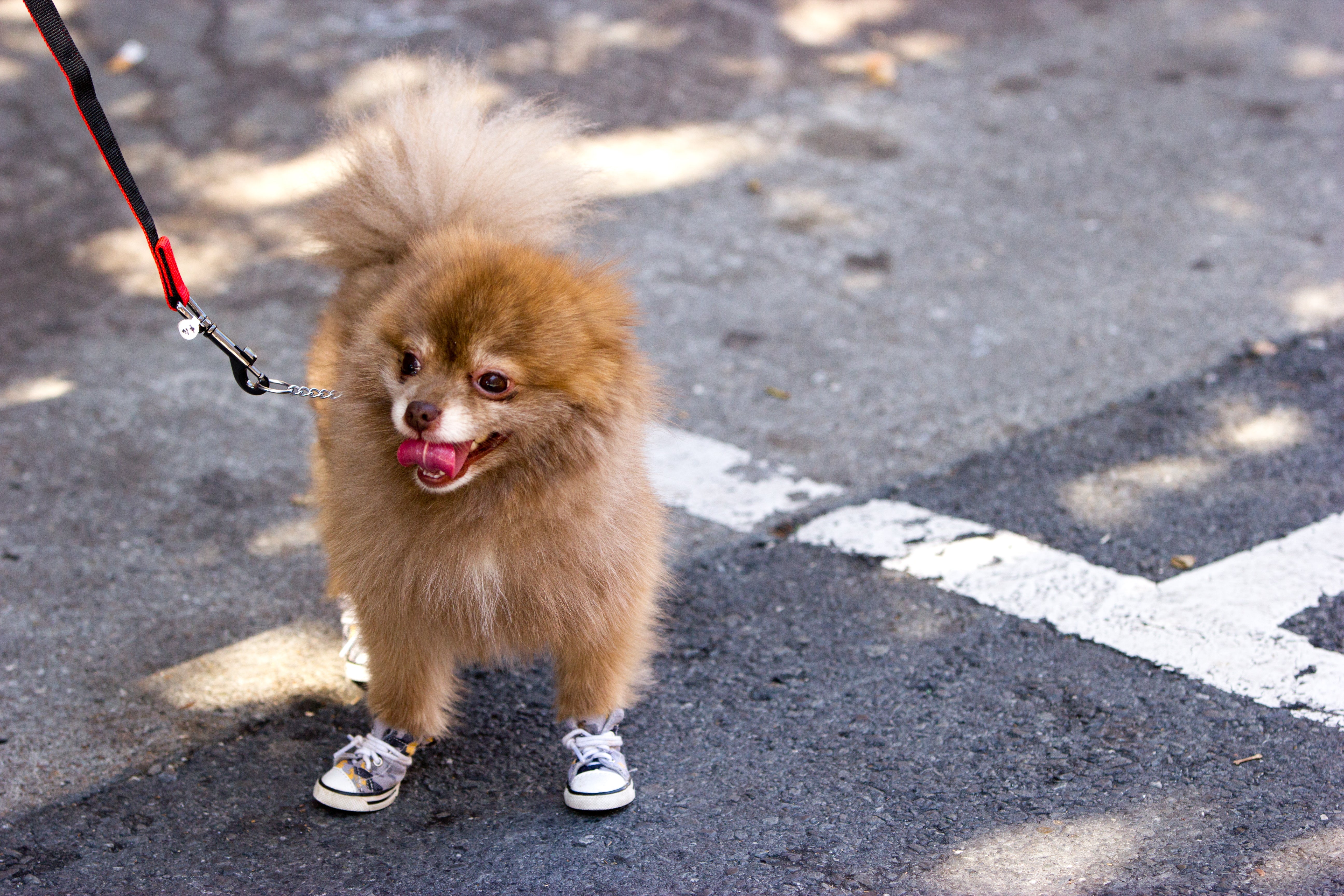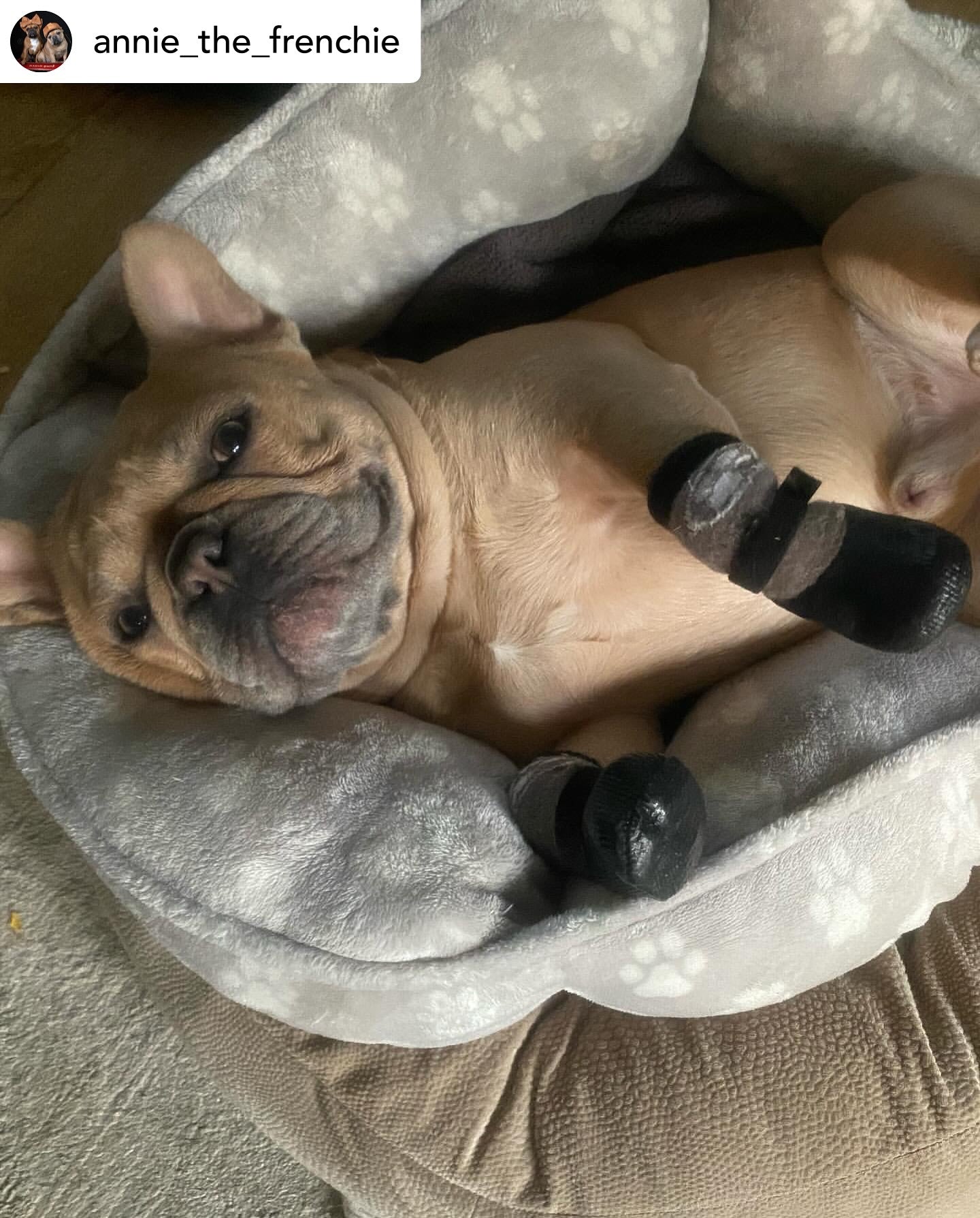
Dog Socks vs. Dog Shoes Which Is Better For My Senior Dog?
Senior Dog Challenges
As our dogs age one of the common challenges we see as pet parents revolves around mobility issues. There are many conditions that dogs can develop such as degenerative diseases like IVDD, as well as knee problems, hip dysplasia, and general muscle weakness that make walking more difficult. When walking outdoors you may notice that your dog has started to scuff the tops of their toes and indoors you may start seeing your dog slipping on your indoor flooring such as tile, hardwood, and laminate. You may also start noticing changes in your dog's skin and a growing need to curb licking and scratching.
In addition to working with your veterinarian, you may be wondering what else you can do to help your dog regain some of their much-needed stability and protect their paws. Solutions do exist but not everything works for every dog so let's explore two possible products to understand which is better for your senior dog with a look at dog socks vs. dog shoes.
We will look at three categories including paw protection, grip, and lick prevention to see the advantages and disadvantages of each of these two types of dog footwear.
Dog Socks vs. Dog Shoes - Paw Protection

Victorgrigas, CC BY-SA 3.0, via Wikimedia Commons
When our senior dogs start facing mobility challenges one of the common complications is their inability to lift their paws as high as they used to when they step causing the tops of their toes to scratch along the surface. When indoors this may cause them to trip or stumble but when outdoors this scuffing can lead to open and painful sores on the tops of their toes. Every single one of my dogs eventually faced this issue so what can be done to prevent this?
Dog Shoes
An effective means of protecting against paw scuffing, especially on abrasive surfaces such as pavement can be using dog shoes or dog boots. The advantage of using one of these forms of paw protection is that they tend to be quite durable and can withstand the constant scrapping that happens to them as your dog is walking on sidewalks or roads.
Dog shoes are typically better for use in winter conditions providing grip, whereas dog socks may be slippery under those conditions. Protecting your dog's paws from the damage hot pavements can inflict is another great reason to use dog shoes.
The downside however may be a deal breaker when we are talking about senior dogs with severe mobility issues because dog shoes have a sole and that sole means that your dog needs to pick their paws up even higher to take a step. This is concerning if your dog has significant scuffing which means they already struggle with lifting their paws, so making this more difficult can lead to a tripping hazard.
Dog Socks
Another way that you can protect your dog's paws from injury while walking outdoors is to use dog socks. Dog socks are thinner than dog shoes so you are not asking your dog to lift their paws much higher which certainly helps. The major downside of dog socks when used outdoors however is they lack durability.
Our Grippers dog socks are more durable than most socks on the market because of the rubber coating however when your dog is scuffing on each step they will wear down considerably faster than dog shoes. Dog socks are not ideal in winter conditions but can be used to prevent injuries to paws from walking on hot pavements much like dog shoes, but again durability would be an issue.
Dog Socks vs. Dog Shoes - Grip on Indoor Surfaces

When your senior dog is struggling with joint or muscle problems one of the first things you will see is that they start to slip and slide on indoor surfaces such as tile, laminate, and hardwood. If your dog starts to fall on these floors they may lose their confidence and avoid them altogether. It can be heartbreaking to see your dog struggle on flooring they may have navigated without issue in their younger years.
The good news is that by providing your dog with the proper footwear you can not only give them the traction they need to regain stability and avoid injury, but you can also restore their confidence. But which dog footwear is best for providing your dog with grip on these slippery surfaces?
Dog Shoes
While mostly designed for outdoor use dog shoes can be effective in providing your dog with traction on slippery floors. Once again if your dog has trouble lifting their paws this may not be the best solution, but if that is not the case you may find this to be a great option. Also if your dog is already using them on your walks outdoors they may have already become accustomed to them, so using them inside as well would be an easy transition.
Dog Socks
Non-slip dog socks such as our Grippers are really designed for this exact reason - to give your dog grip on slippery floors. When used inside the durability issues are not really an issue since there are no abrasive surfaces to wear them down.
The real advantage to using dog socks for traction is that their natural feel helps dogs to still sense the floor underneath their paws. This "feel" is very important, especially given that dogs with mobility issues have often lost some of the sensation in their paws and to take away what is left can make walking more difficult for them.
Also by providing a more natural feel dogs will adjust to wearing socks so much faster than if they were wearing dog shoes or dog boots. You have all seen it - you put something on your dog's paws and they start walking in a hilarious way holding their paws up and overexaggerating their movements. This is because you have just put something so foreign onto their paws that they don't know what to do with it.
However, if what they are wearing allows them to feel the floor they will adjust quickly and before you know it will be walking as if they were wearing nothing at all. This may also happen with dog shoes but it is not guaranteed and may take much longer.
Dog Socks vs. Dog Shoes - Lick Prevention

Another very important use for dog footwear is to prevent your dog from obsessively licking their paws. As dogs get older they often face problems with their skin whether from age, medical conditions, overall health, or allergies, they may struggle with itchier more irritated skin leading to excessive licking.
Dog footwear can help in two ways. First, if your dog is allergic or sensitive to things in the environment such as grasses then having something to cover your dog's paws can help them avoid this allergen and lessen the impact on their paws when going outside.
The ideal footwear would be something your dog can wear outdoors so dog shoes are one obvious choice as are dog socks, though with dog socks you would ideally need something fairly waterproof so they don't get wet and can actually block out the allergen you are trying to avoid.
It might be worth considering which option you find easier to put on. Some dog shoes can be easier to put on than dog socks so if it is a quick use, just to take your dog outside for a potty break, this may work better for you. However, if you are already using dog socks for indoor traction then being able to use them outside as well would be a convenient option.
The other way dog footwear can help is that by covering the paw they simply can't lick it, giving it a chance to heal. Sometimes what happens is a dog licks their paws so much that they create this vicious cycle in that now the itching and soreness may be more from the licking than the original source of irritation. If your dog has licked their paw to the point of creating raw spots I definitely recommend taking your dog to the vet so they can give your dog something to help heal those paws, but using footwear is another way that you can help break the paw licking cycle.
Dog Socks vs. Dog Shoes Which is Better for My Senior Dog?
So which is better dog socks vs. dog shoes when it comes to senior dogs? The answer I could give is that it depends which is very true since different needs and uses may lend themselves to one over the other, but for me, it really comes down to the mobility of your dog.
If your senior dog is still quite mobile then they could get a lot of use out of dog shoes especially outdoors. I would aim for dog shoes with the thinnest soles though to help make walking easier for your dog.
But if your senior dog has significant mobility challenges then I would definitely go with dog socks instead of dog shoes because they will be the easiest for your dog to use, give them the grip and stability they need, will retain their feel for the floor and because they are designed to fit snug, similar to a well-fitted glove, they won't have to lift their paws up much higher to accommodate them.
If you select based on this then you would have the best solution given your dog's capabilities to help manage their mobility challenges, protect their paws, and if needed, prevent excessive licking.
Be Patient and Give it Time
When you try putting something on your dog's paws be prepared for it to be difficult. Your dog will not be used to it, you will not be used to how to put it on, it may take time for your dog to accept it and it may even take time for the product to soften up. All this to say you should be prepared for the fact that you may not have a solution the instant you try dog socks or dog shoes, but with patience and practice they have the potential to literally change your dog's life.
Dog footwear may not be for every dog, but if your dog is slipping, falling, or nervous when crossing your indoor floors, needs paw protection or you are looking for a way to prevent excessive licking then it is such an affordable and simple solution worth exploring.
Ann-Marie Fleming is the Founder & CEO of Dog Quality, a provider of innovative assistive products focused on improving the quality of life for older dogs and the families that care for them.

